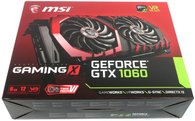 With the GeForce GTX 1060 after the GTX 1070 and GTX 1080, MSI is now the third graphics card with the new cooler, which appears almost oversized on this card.
With the GeForce GTX 1060 after the GTX 1070 and GTX 1080, MSI is now the third graphics card with the new cooler, which appears almost oversized on this card.
The advantage is obvious, because it is perhaps even quieter than with the already barely perceptible MSI GeForce GTX 1070 Gaming X 8G.
The remaining features are also very similar, although here too – due to Nvidia's model policy – the SLI connection is unfortunately missing.
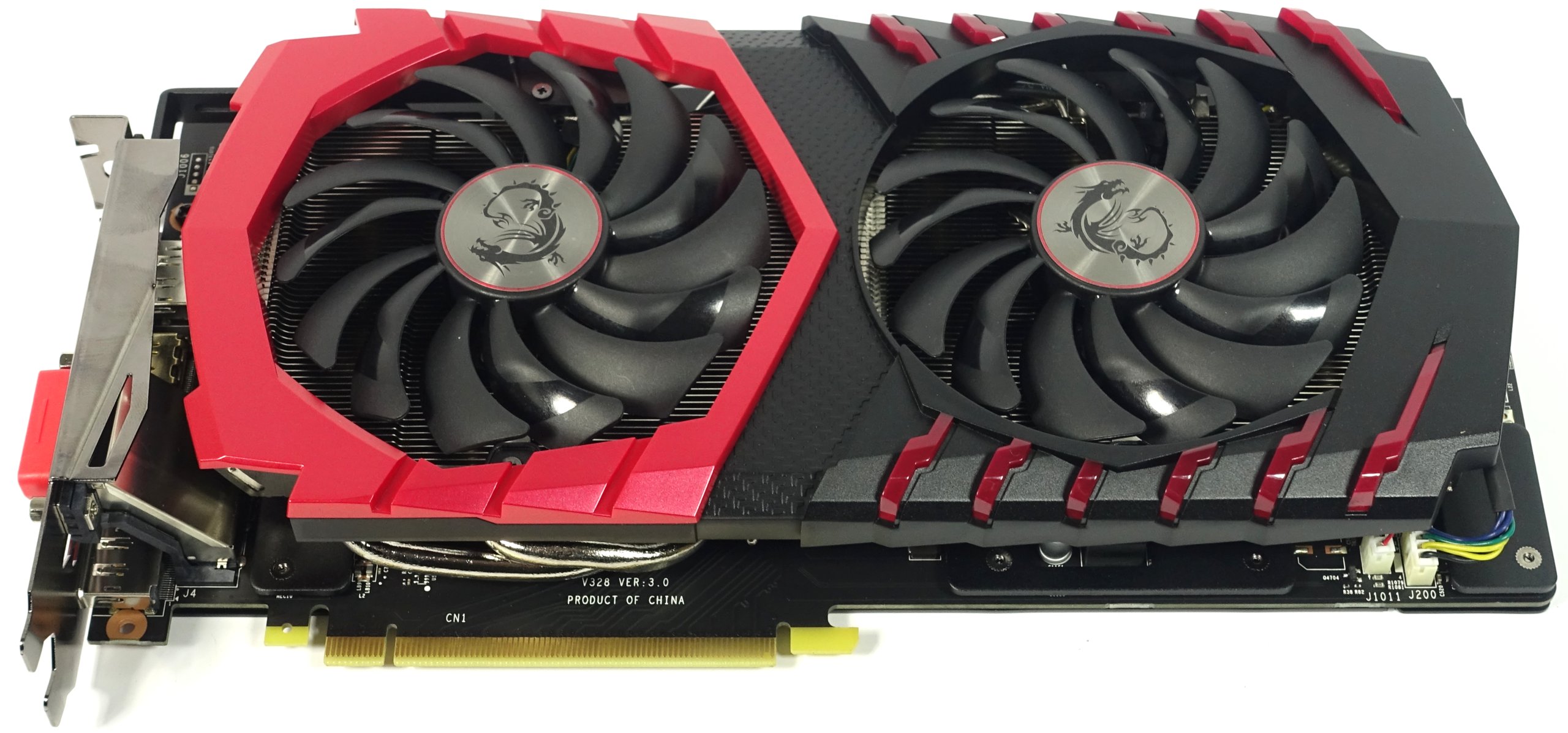
Nothing new in the West? In principle, it is probably not, as far as MSI's rather conservative model philosophy is concerned, even if the look at the board and some measurements will of course be worthwhile. The latter, in particular, are a point for which we must put forward an important restriction.
Since each card can be overclocked more or less well, we test all samples as "out-of-the-box" – just as the vast majority of buyers would use them – and generally refrain from using the in-house control software or. third-party tools.
MsI has once again taken advantage of this circumstance and, as with the GeForce GTX 1080, has provided the press samples with a different BIOS, which competes with higher clock rates (and perhaps also higher power target) than the retail BIOS allows for the retail market.
That is why we cannot award this card, however good the technical implementation in detail, and unfortunately we have to remove it from the comparative summary, because it would simply not be fair to the honest competitors.
External structure and connections
As with the larger sister models, the radiator cover is made entirely of relatively thin plastic, but a very massive mounting frame under the lid provides more stability.
At 1003 grams, the card is not a lightweight – because it is only approx. 100 grams lighter than the MSI GeForce GXT 1080 Gaming 6G and measures identical 28.4 x 13.5 x 3.5 cm (LxHxT, built-in dimensions). So it occupies two full slots and is also relatively high. The two rotor blades of the double ball bearing fan have a diameter of 9.5 centimeters, which explains the very high structure of the card.
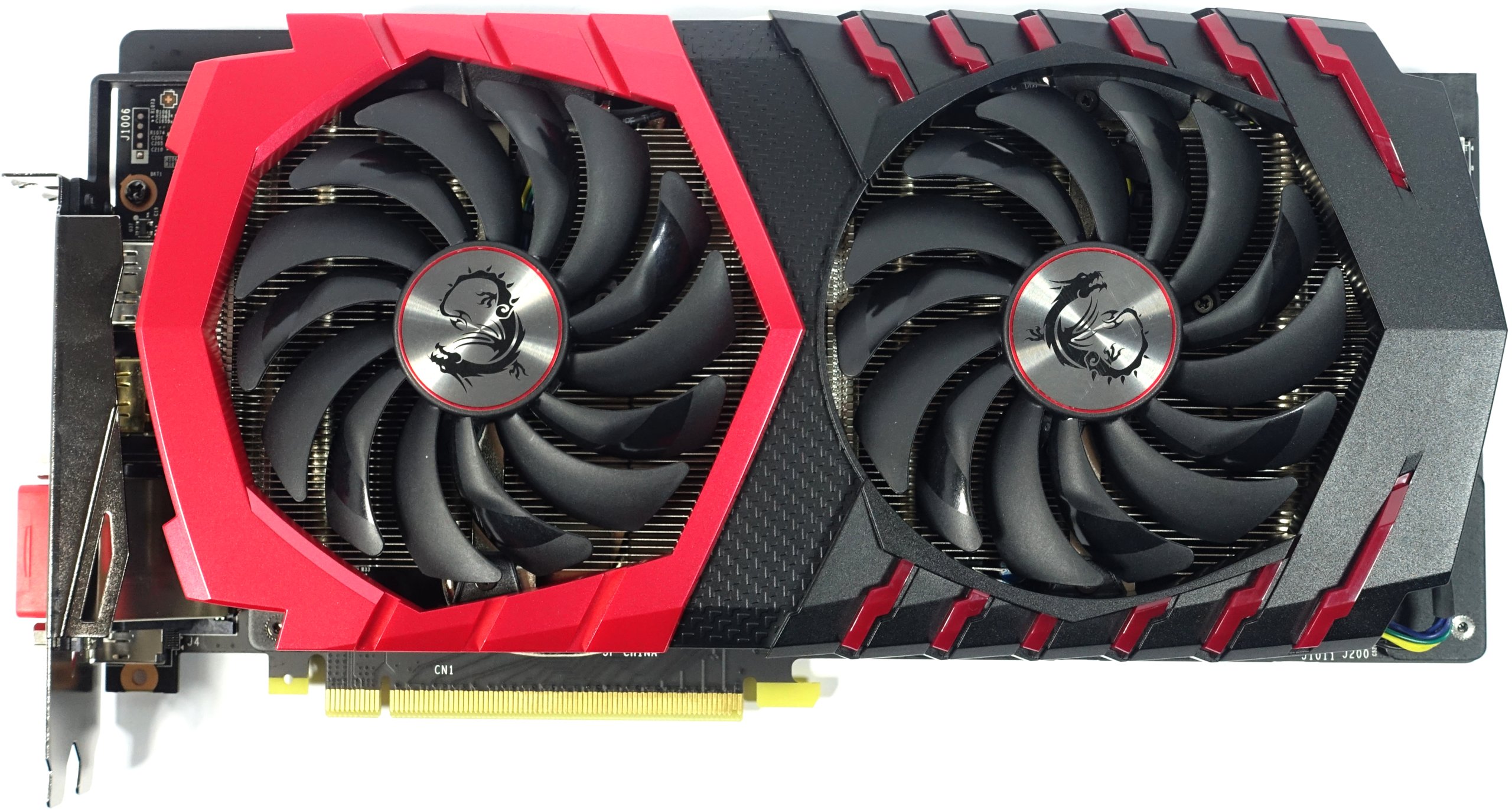 |
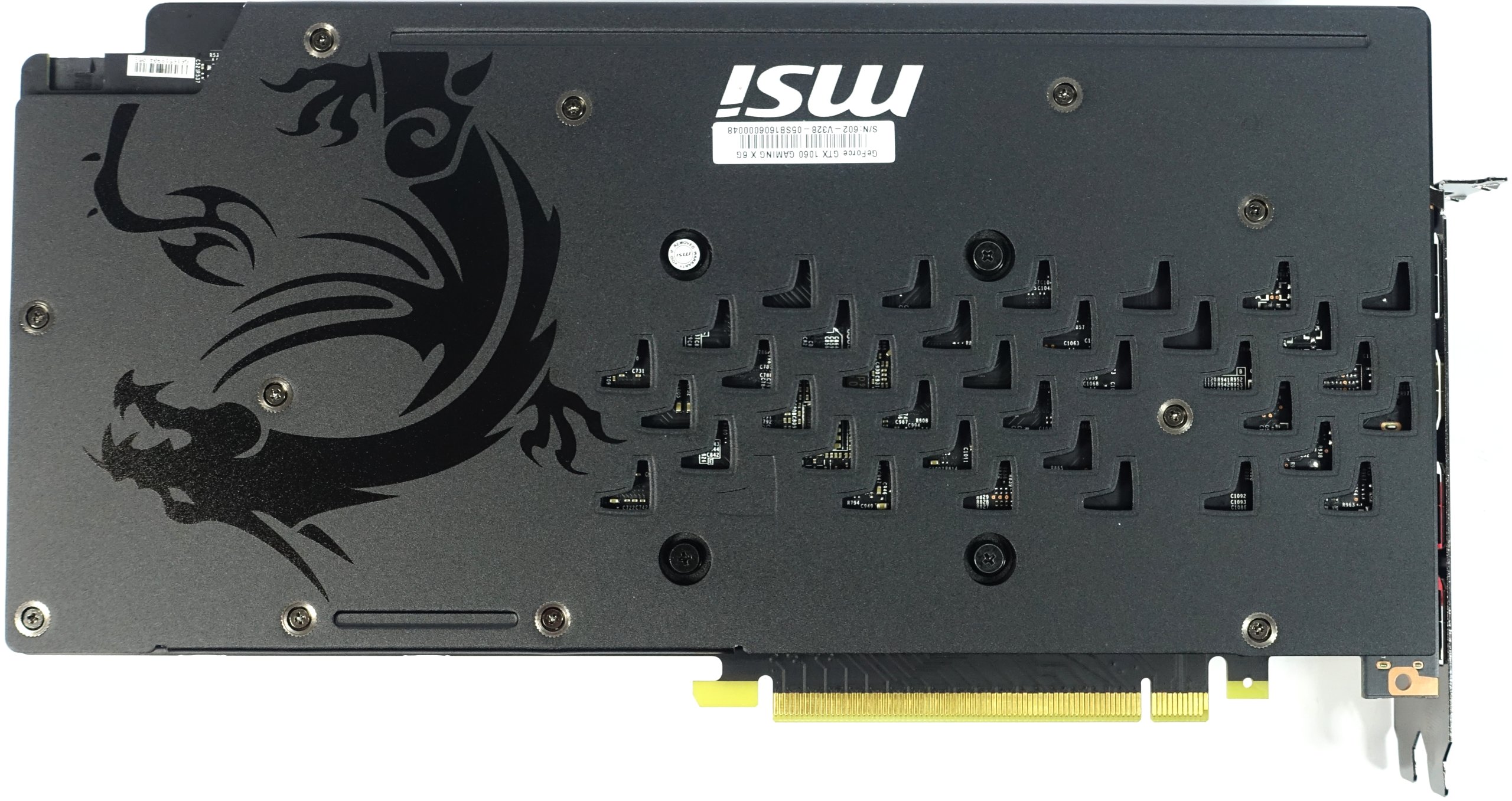 |
The back of the board is covered by a one-piece backplate, which has ventilation openings, but is completely functional due to the lack of areas connected to thermal guide pads.
You also have to plan for another five millimeters of depth on the back of this backplate – if you have to use the top motherboard slot and possibly use a large CPU cooler, these few millimeters can be decisive.

The top of the card bears a luminous MSI lettering and, as with the other two models, is characterized by three visible heatpipes (twice six and once eight millimeters); the 8-pin PCIe power supply connector sits 180° rotated at the end of the card.
The design follows the color of MMI's corporate identity in black and signal red; we already know the general design of older MSI graphics cards in a similar way.

The end of the map is completely open, as the slats are horizontally aligned and thus the air flow towards the end of the map or Slot aperture goes.
This is advantageous in that on the one hand a not inconsiderable part of the waste heat is already passed out of the housing via the slot aperture and also the airflow in the housing can be used with some consideration in order not to indirectly use a possible CPU air cooler. immediately with heating up.
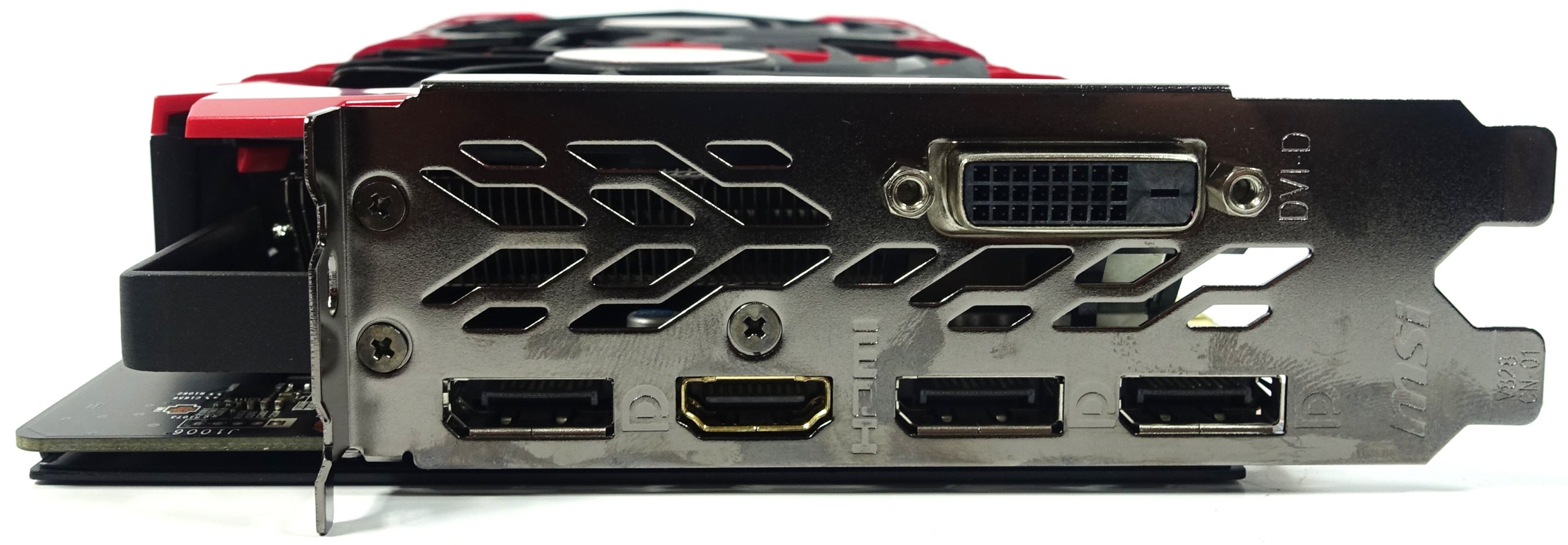 |
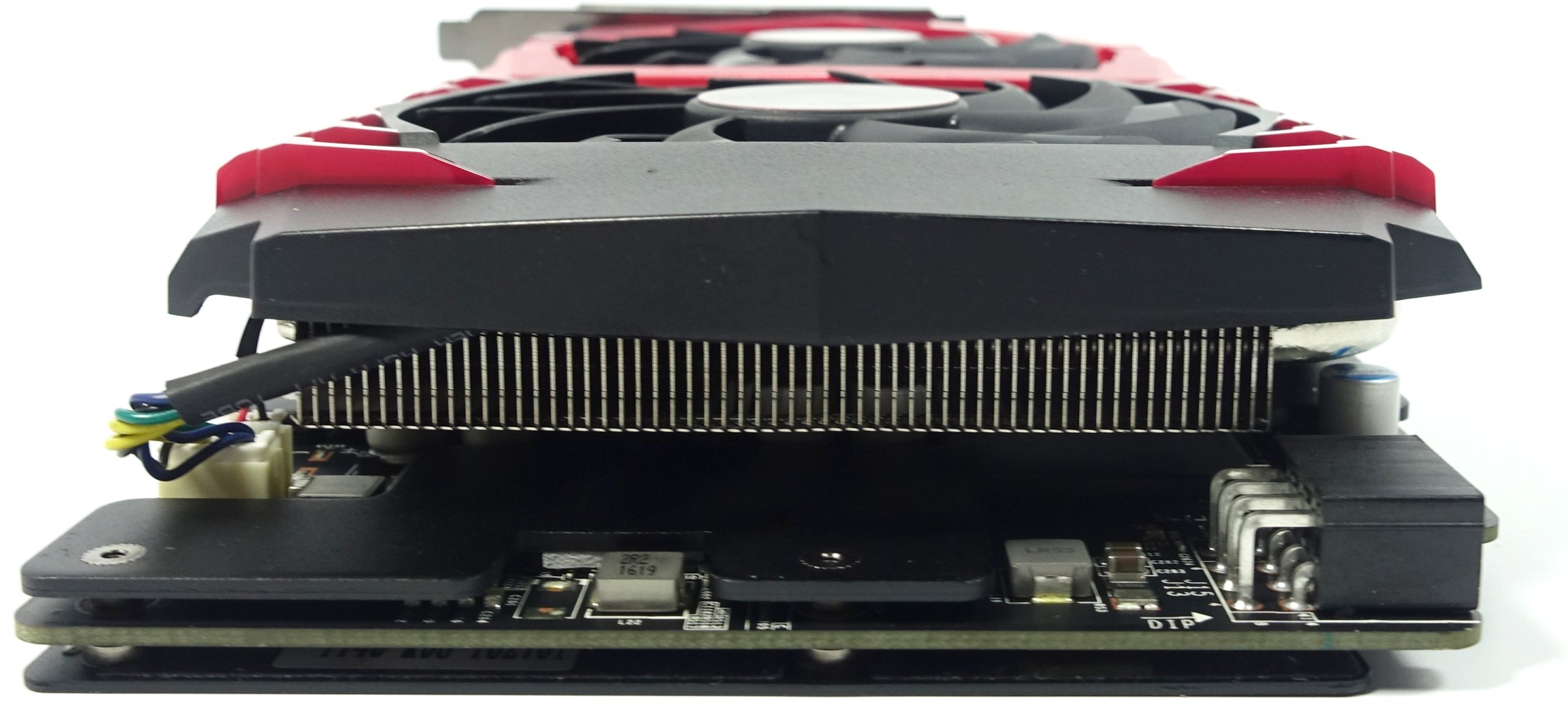 |
The slot aperture carries a total of five outputs, a maximum of four of which can be used together as part of a multi-monitor setup. In addition to the dual-link DVI-D (an analog signal is not looped through), there is an HDMI 2.0 output and three DisplayPort 1.4 ports on the back.
The rest of the slot aperture is provided with some openings for the air outlet. If the usually over-fed DVI connector had been omitted altogether and optionally included an adapter, then the effectiveness of the ventilation could certainly have increased.
Board and assembly
A glance at the board shows us interesting things: The 5+1 phase system does not rely on the uP9509P from uPI Semiconductor Corp like Nvidia's reference card of the GeForce GTX 1060, but like the larger sisters the uP9511P of the same manufacturer as a PWM controller.
All five phases are fed from the PCIe connector, only the memory is supplied in a separate phase via the motherboard slot. In addition, more in the measurements of power consumption and flowing currents.
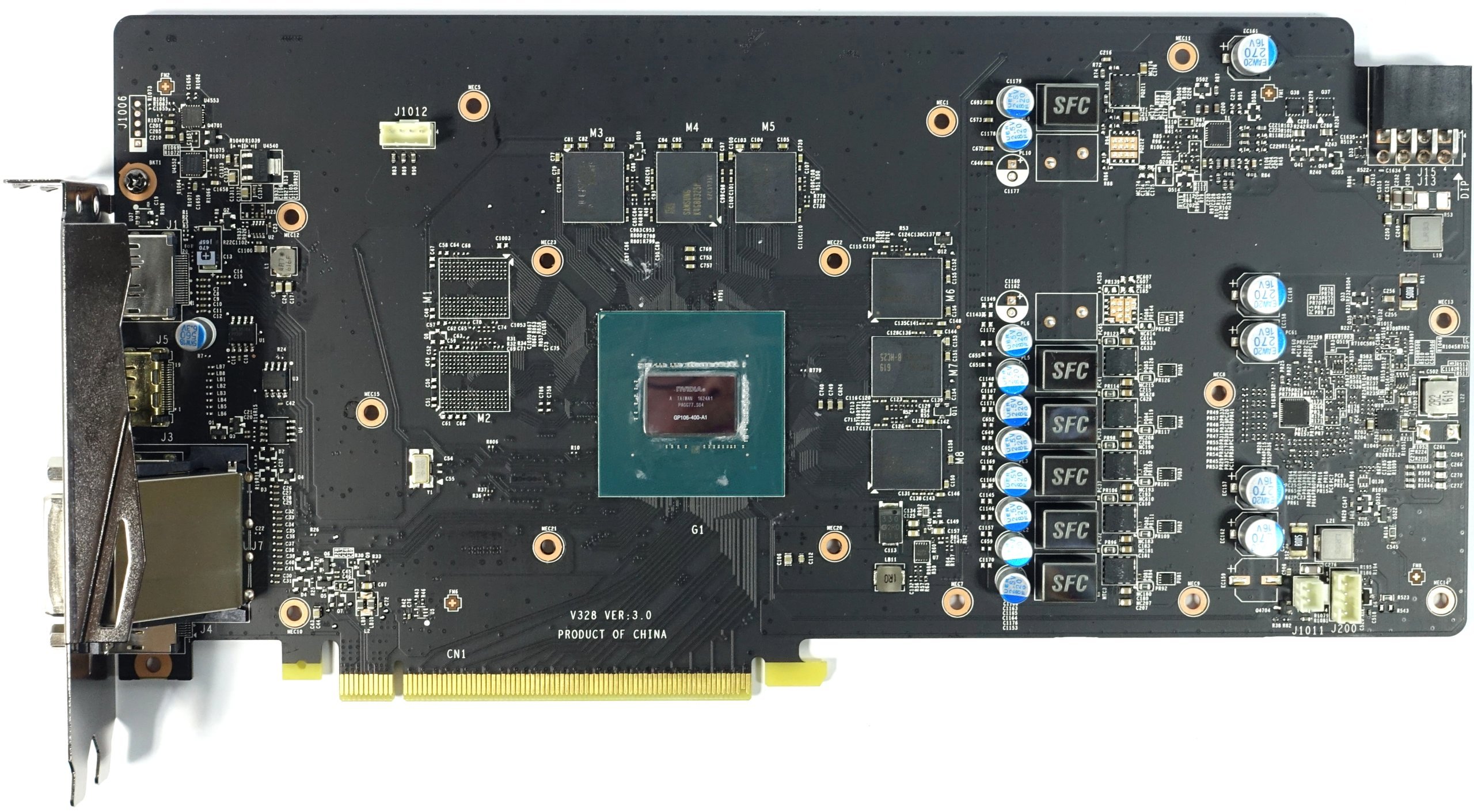
While the voltage of the five GPU phases is controlled by dual-N-channel MOSFETs of the M381 family that do not require an additional gate driver, memory uses an SM7320, which is also a dual-N-channel model. The coils used are neither above average good nor particularly bad, but acceptable mass-produced goods.
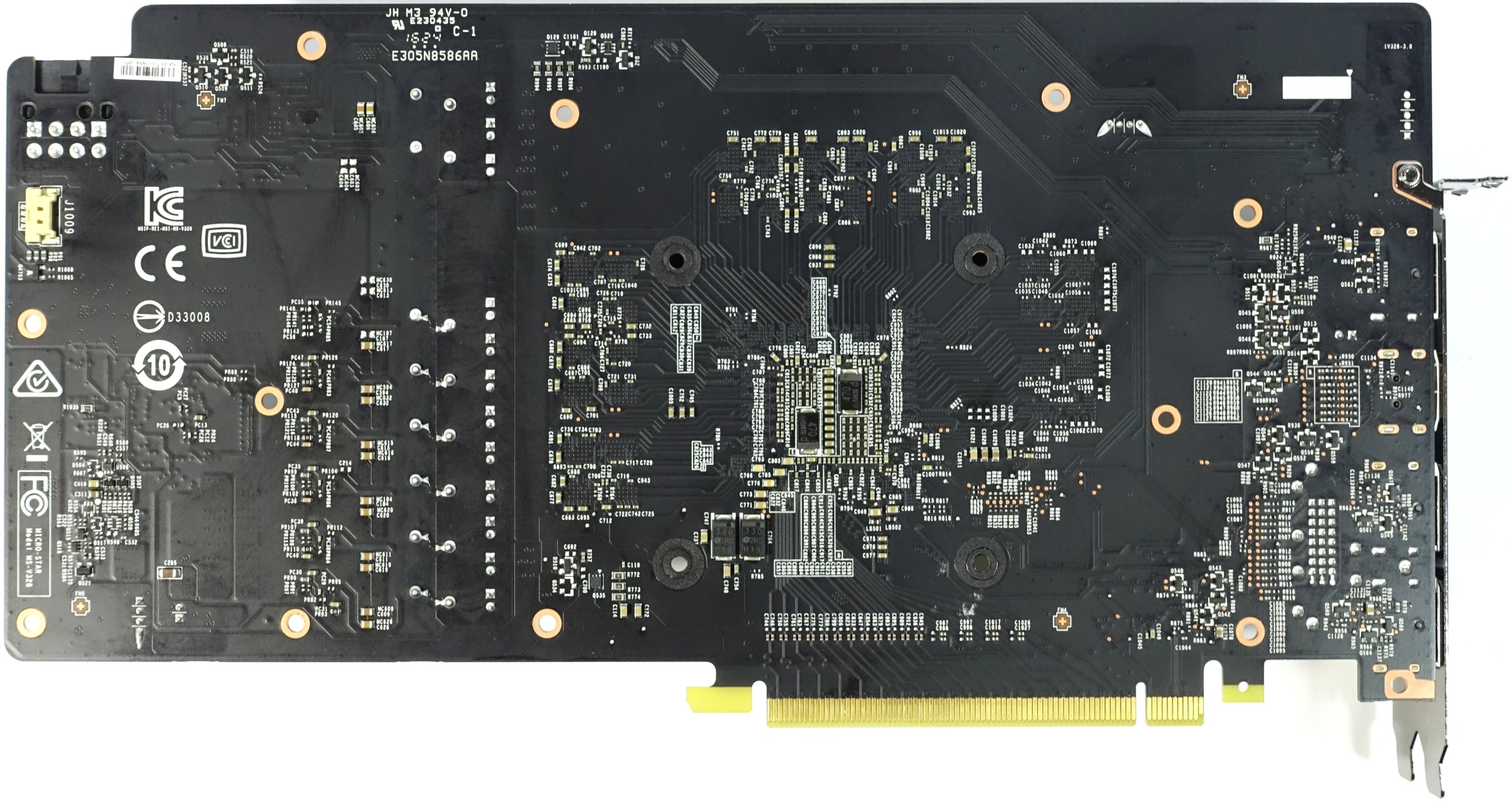
Below the GPU, two capacitors are soldered to intercept and smooth voltage peaks – exactly the same principle as Nvidia's Refrenz.
It is of course noticeable that in the GTX 1060 only six of the eight existing memory fields are filled with modules. These are Samsung modules of the type K4G80325FB-HC25 with a capacity of eight gigabit (32x 256 MBit each), which can be operated with voltages between 1.305 and 1.597 volts depending on the required clock. In total, this results in a total memory of six gigabytes.
Clock rates, voltages and power consumption
Before we get to the power consumption, let's look at the speeds of boost clock and adjacent GPU core voltage. One can see here very nicely the connection between clock frequency and voltage, whereby the clock curve in gaming does not break more clearly due to the power target, which is significantly higher than the reference card, even with the fully warmed up card. Clock rates and voltages behave very similarly as curves.
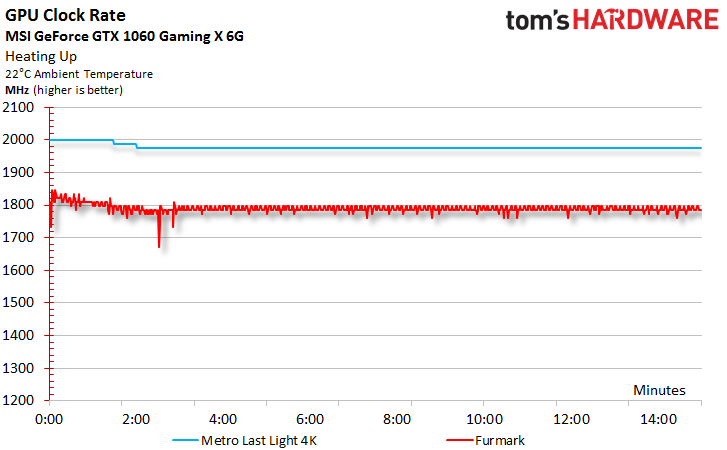
While the boost clock drops from 2000 MHz to still respectable 1974 MHz after heating and under load, it also looks similar with the voltage values. If initially up to 1.05 volts are reached, this voltage then drops only slightly to a constant 1.043 volts, whereby the course remains conspicuously balanced as with the clock.
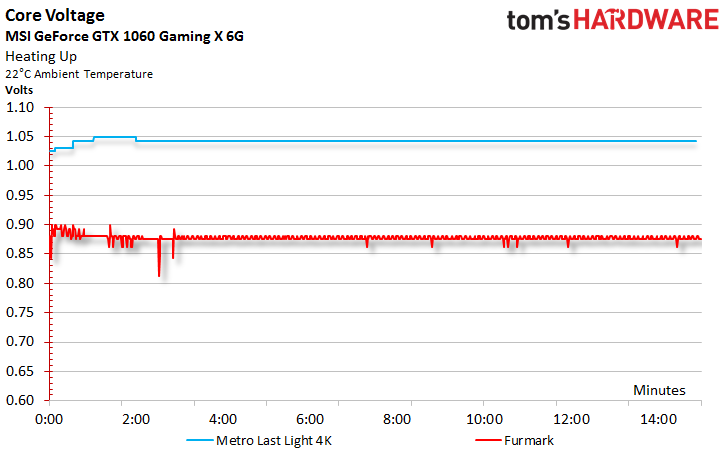
These voltage curves and the flowing currents then result in the power consumption, which we can measure very well with our exact equipment at all connections. The lowest GPU clock speed for idle measurement is 240 MHz. We worked with a variable low-pass filter for the measurements, so that we only mention possible, very short load peaks on the margins (greyed out bar), because they are hardly relevant in practice and have also irritated many readers.
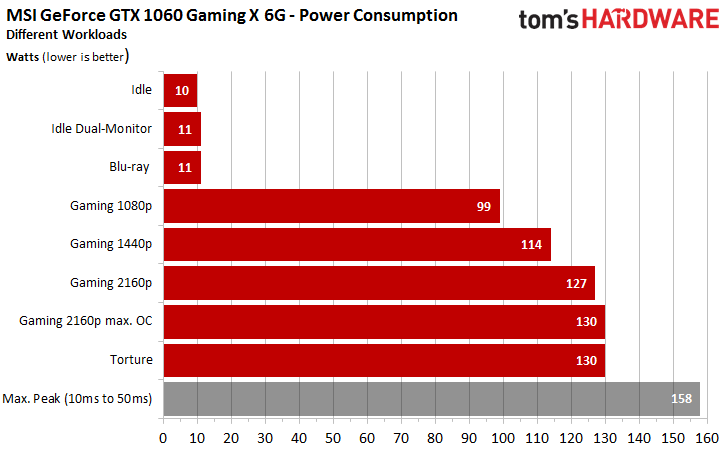
Loading of the power supply connections
Now let's go into a little more detail and look at the load sharing at maximum gaming load and stress test. Since MSI no longer actively uses the 3.3V motherboard connector on the GeForce GTX 1060 Gaming X 6G, we have dispensed with this voltage rail in the diagrams. We can see here the successful division, which – as already mentioned above – clearly shows the weighting towards the PCIe connection:
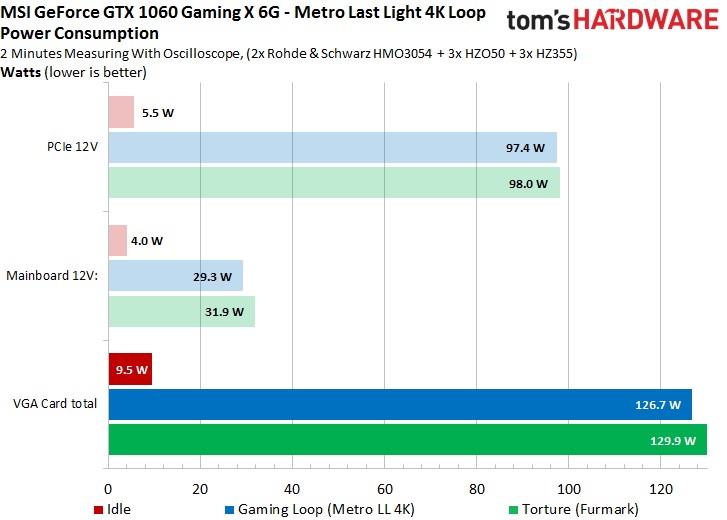
Here's another clickable diagram with the respective history curves for gaming and stress testing:
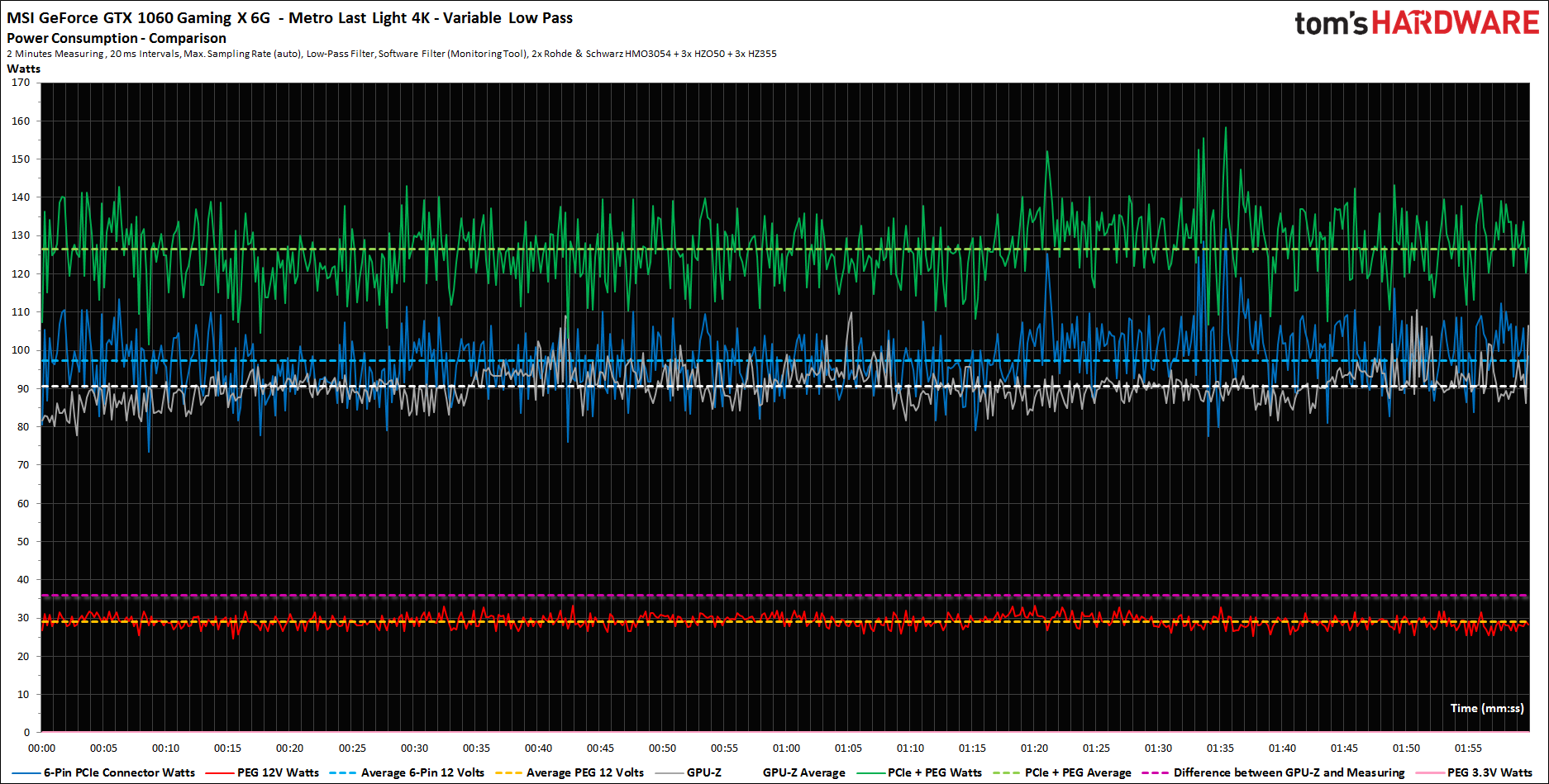 |
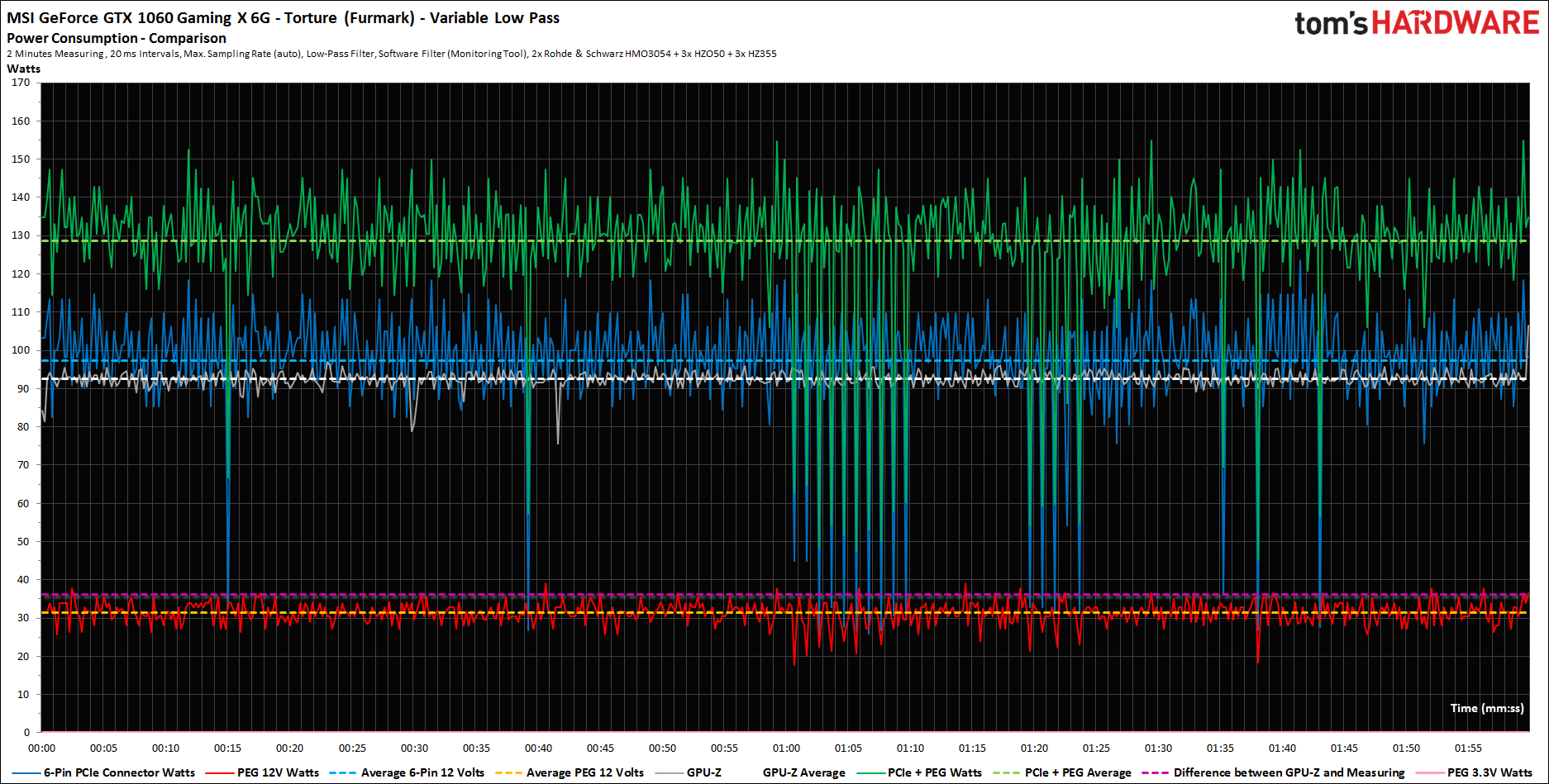 |
Since the standards (PCI SIG) refer only to the flowing currents, we now look at the following diagrams, because the power consumption is only half the rent. With well below three amperes on the motherboard slot, however, you are definitely on the safe side (PCI-SIG standard: max. 5.5 ampere):
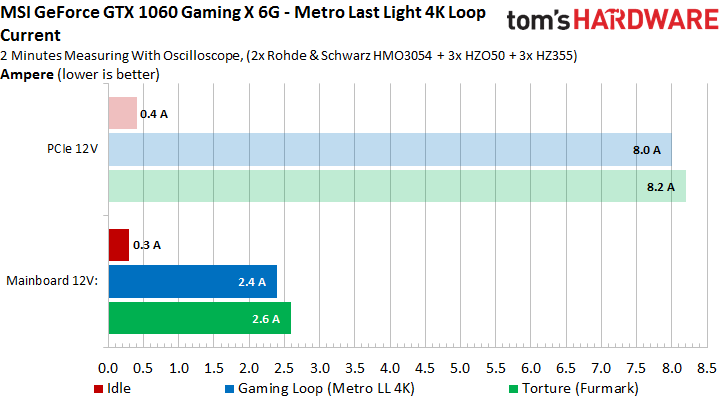
Of course, there are still clear large screens for the measured currents:
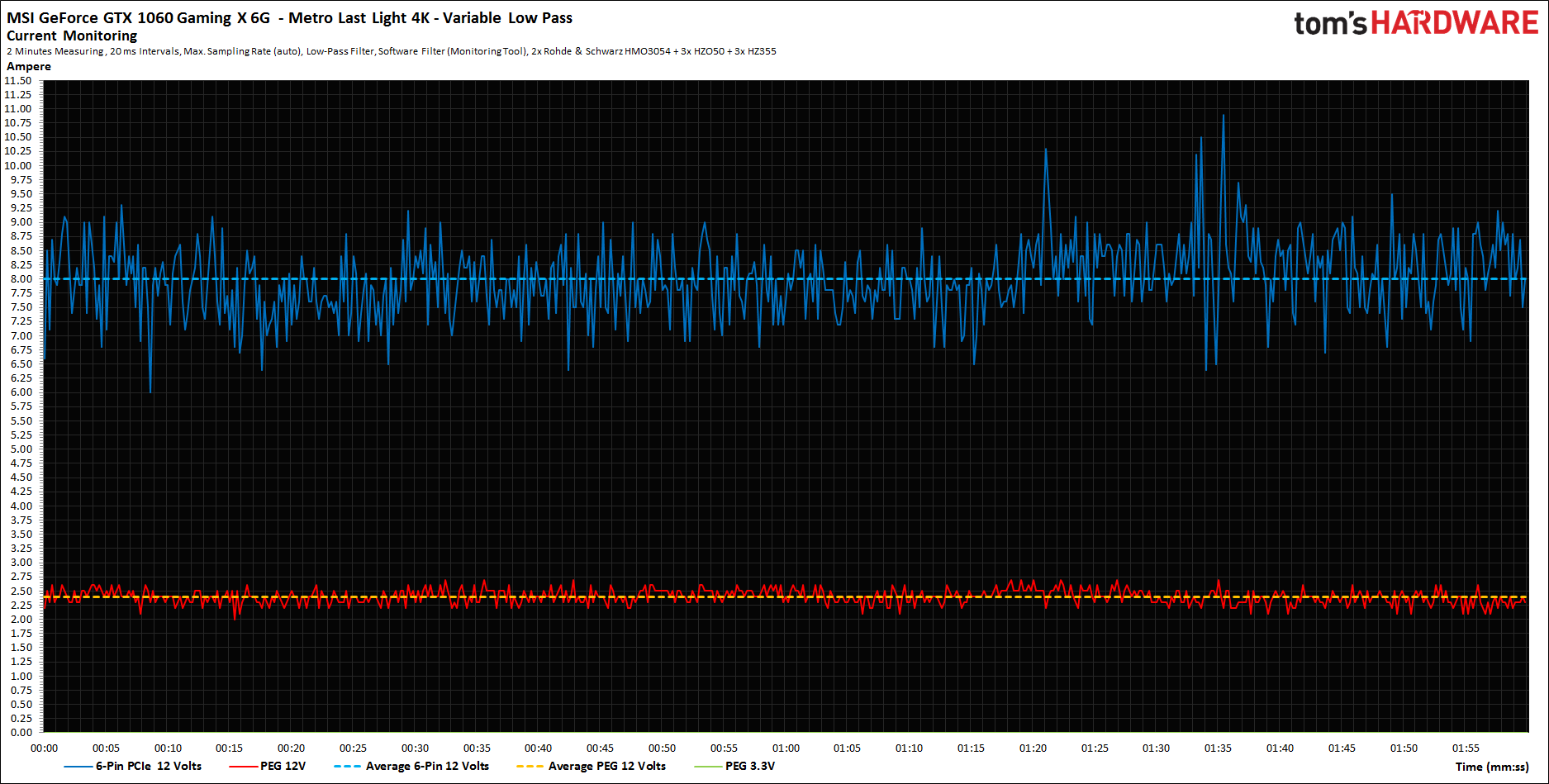 |
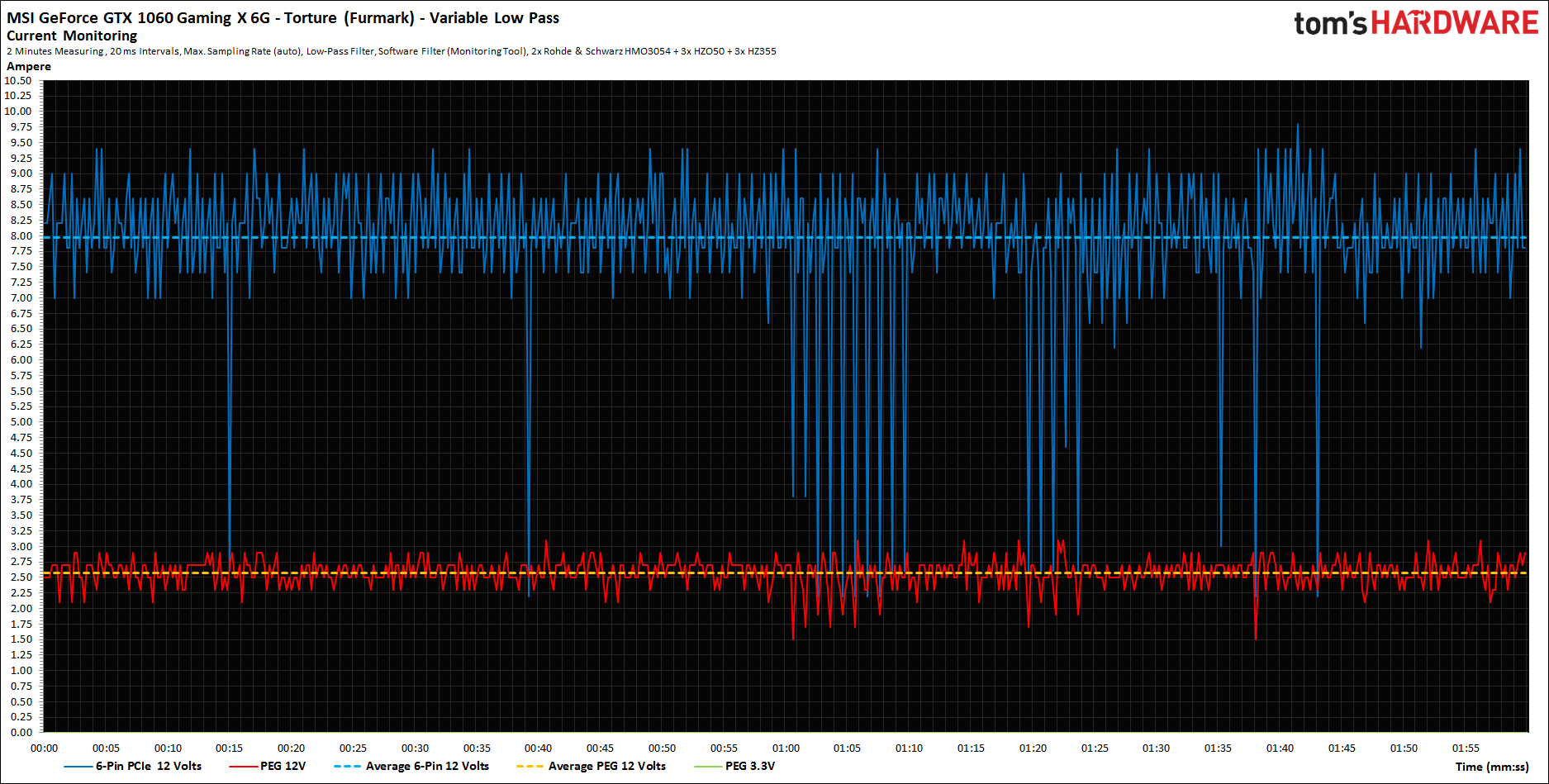 |
Cooling system and temperatures
Cooling is the key to a good graphics card – and in this case it has been designed very elaborately, although the waste heat is actually rather moderate. In contrast to the larger sisters, this time one relies on a closed frame, which not only stabilizes the board, but is also responsible for cooling the memory modules and voltage converters.
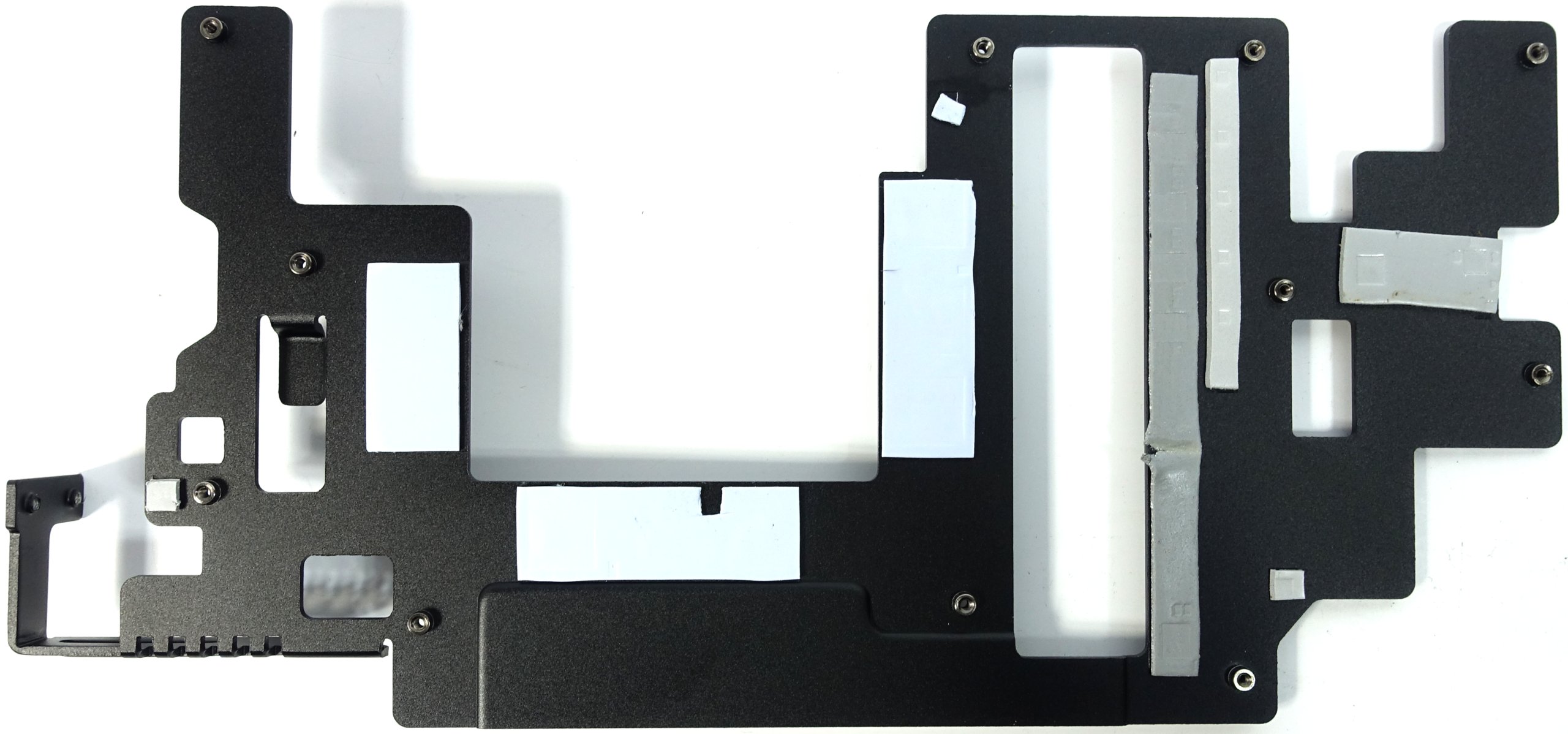
Thermal guide pads between the memory modules as well as the VRM and this frame provide the necessary thermal bridge to the cooling surfaces – even if we would have liked to have had a slightly thinner and more efficient design, since the fan speeds and thus of course also the Airflow on this card.
The frame is screwed to the back of the backplate, which has a spacer that is almost three millimetres high to allow some airflow between the back of the board and the backplate.
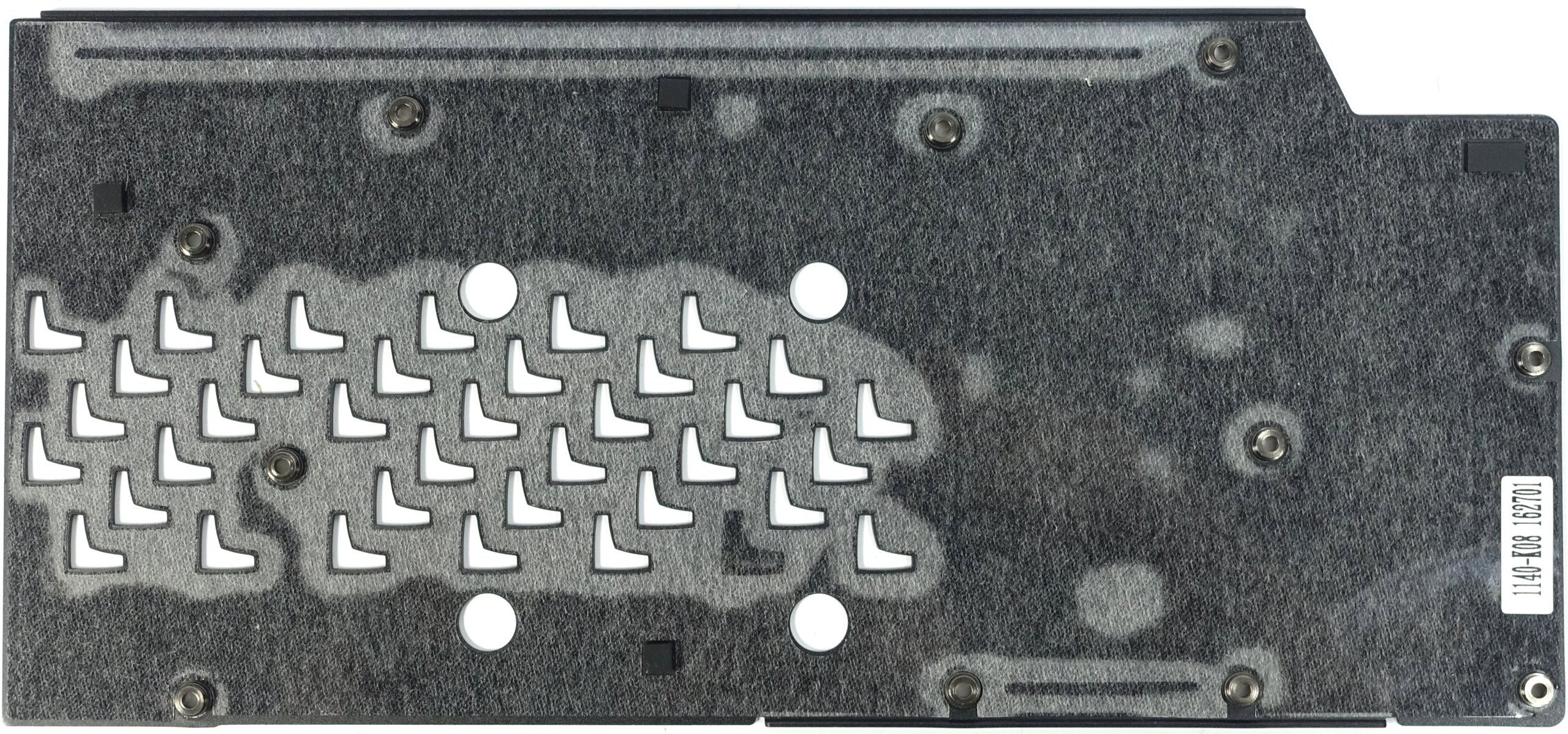
The massive cooler is almost identical to that of the larger sisters and thus has horizontally aligned fins as well as two nickel-plated 6 mm heatpipes and one with a diameter of eight millimeters. Their installation direction is more or less irrelevant, as they are made of sintered composite material – the days of susceptible axial grooves or inserted fabrics are long gone.
MSI also relies on a massive and einfested nickel-plated heat sink.
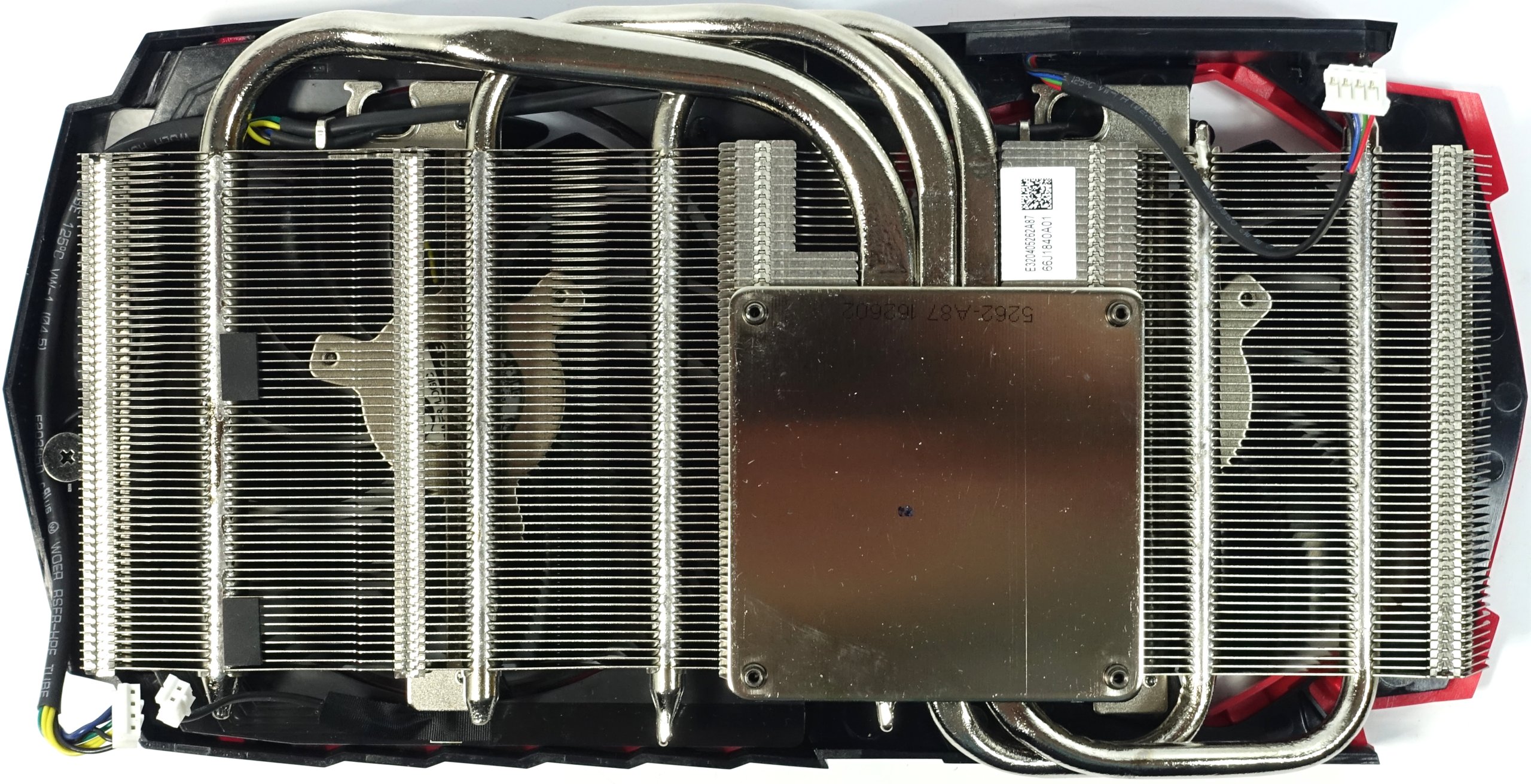
With the almost 63°C of the Gaming Loop (closed housing maximum 65°C), the cooler performs its service almost inaudibly (we'll add to that). The performance of the cooling solution is confident and absolutely up to date.
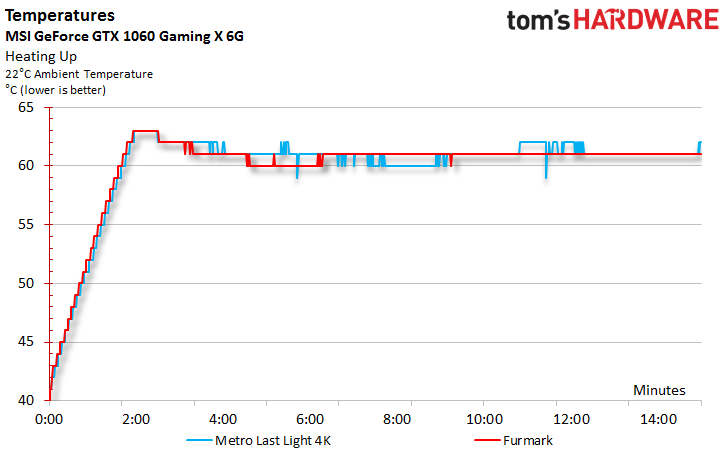
The measurements with removed backplate and specially fixed mounting frame also show that you can't burn anything with MSI. Both the gaming loop and the stress test show no abnormalities.
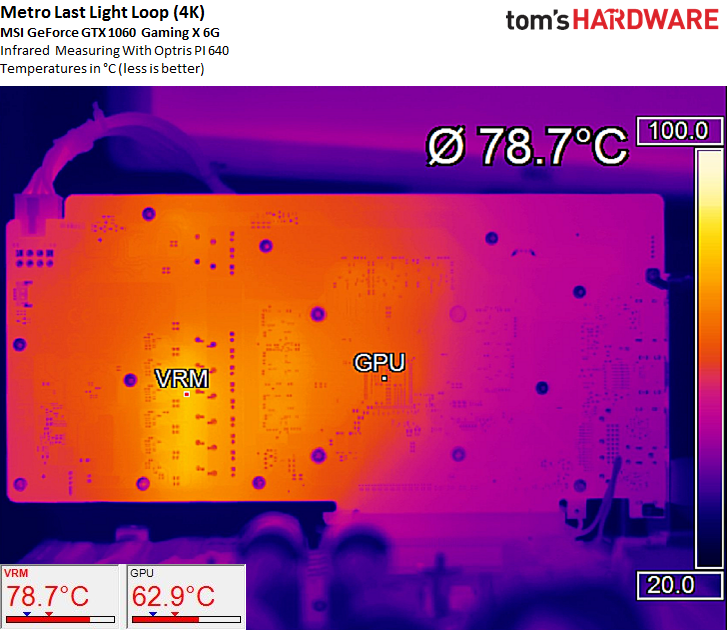
Especially with the gaming loop, you can see that the lower five voltage converter phases are a little more loaded, while the phase for the memory is almost cool due to significantly lower load changes.
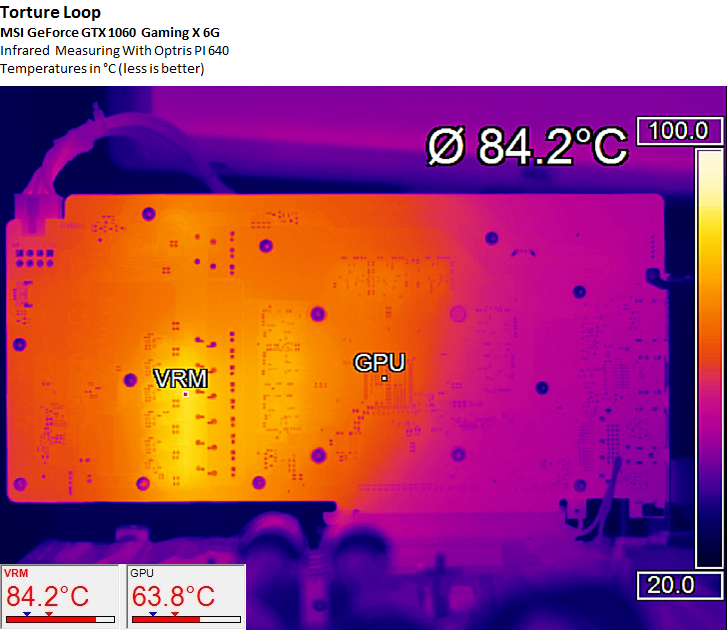
The bottom line is that you have to pay respect to this cooling solution, even if it was actually designed for significantly higher loads – almost 100 percent more, to be precise!
Noise
An exemplary implemented hysteresis as well as fan speeds of around 800 rpm make this card almost inaudible – you can see the fans rather than be heard.
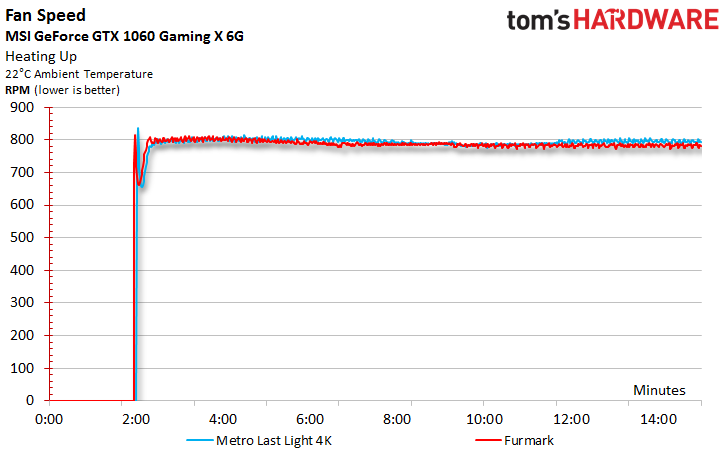
Due to the semi-passive mode, the noise in the idle is not measurable anyway, so we have completely dispensed with this measurement.
Since the identical radiator (compared to the MSI GeForce GTX 1070/GTX 1080 Gaming X 8G) has significantly less waste heat to handle, it becomes almost frighteningly silent in the room. With an excellent 29.3 dB(A), the map even falls below the threshold of what is considered the minimum value of ground noise even in quiet living rooms. This value does not change during the stress test.
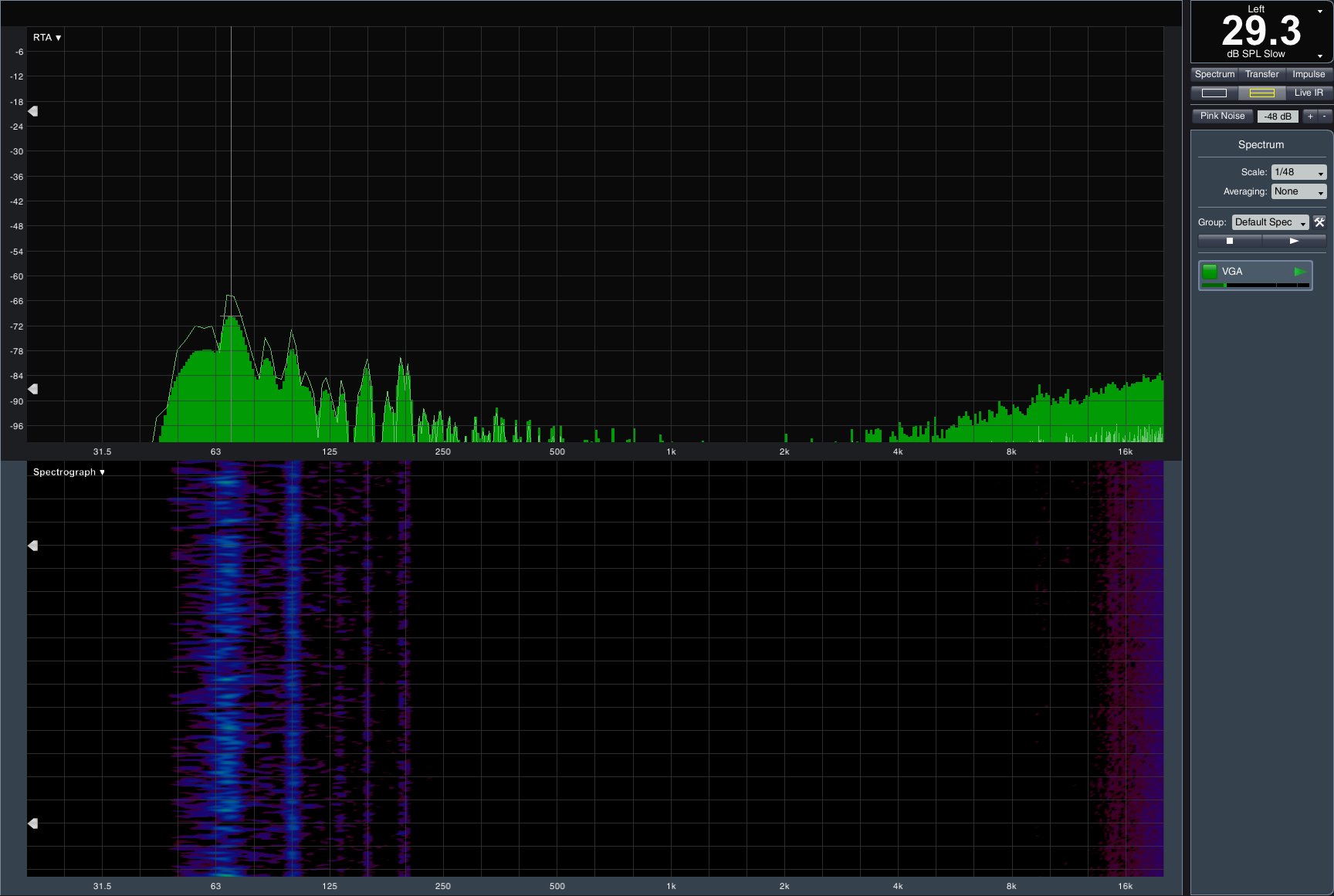
We only see very slight vibrations in the low-pitched range caused by the two very slow-running fan motors. But this is whining at the highest level and just something for the gallery – you won't hear it.
Technical data and interim conclusion
Let's take a look at the technical data and individual details of the graphics card:
- 1 - Einführung und Übersicht
- 2 - EVGA GeForce GTX 1060 Superclocked
- 3 - Gainward GeForce GTX 1060 Phoenix GS
- 4 - Gigabyte GeForce GTX 1060 G1 Gaming
- 5 - inno3D GeForce GTX 1060 Gaming OC
- 6 - MSI GeForce GTX 1060 Gaming X 3G
- 7 - MSI GeForce GTX 1060 Gaming X 6G
- 8 - Nvidia GeForce GTX 1060 Founders Edition
- 9 - Palit GeForce GTX 1060 SuperJetstream
- 10 - [Neu] PNY GeForce GTX 1060 XLR8 OC Gaming
- 11 - Vergleich der Gaming-Performance
- 12 - Vergleich vom Temperatur, Lautstärke und Leistungsaufnahme
- 13 - Vergleichende Zusammenfassung und Fazit


































Kommentieren